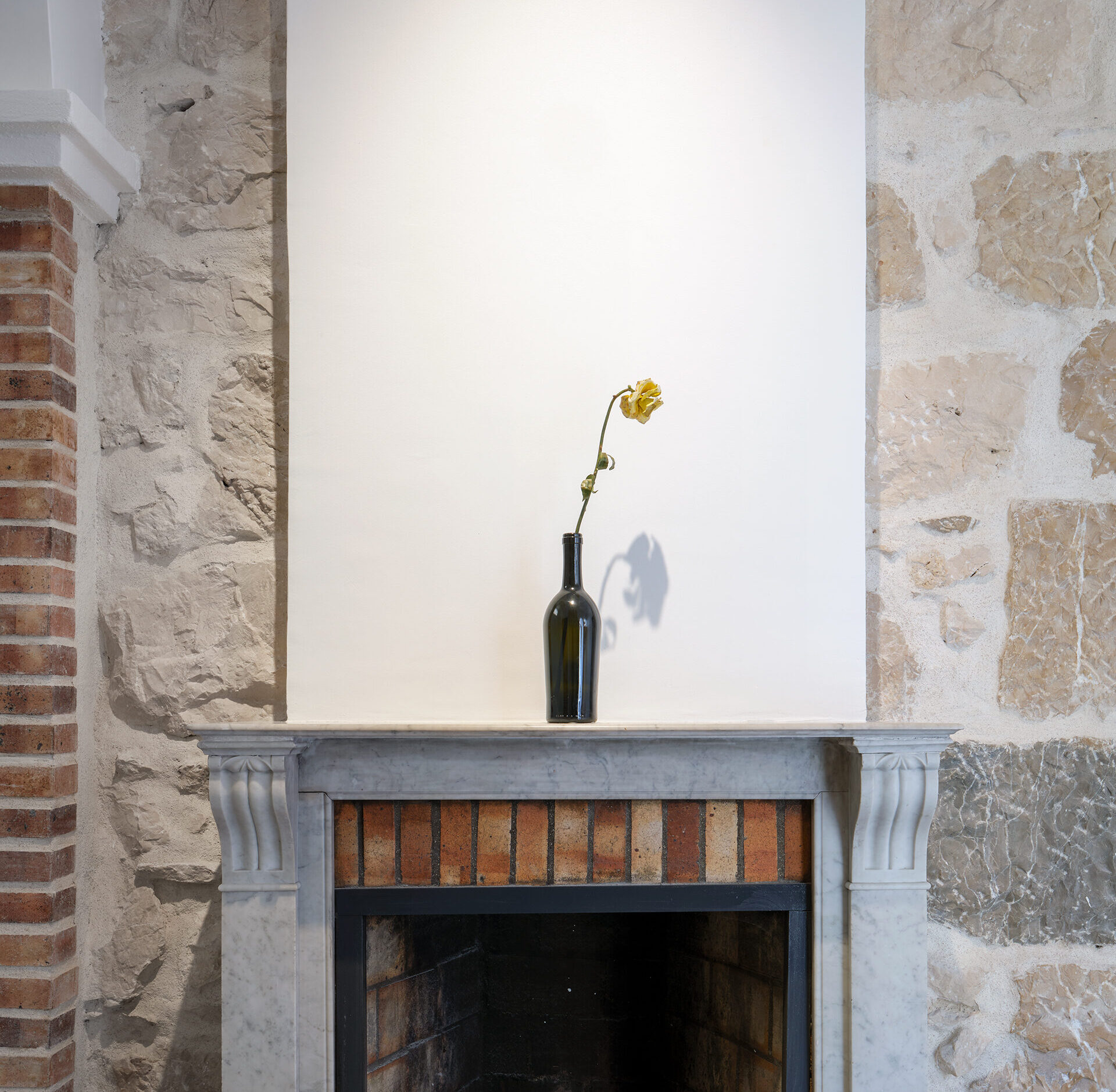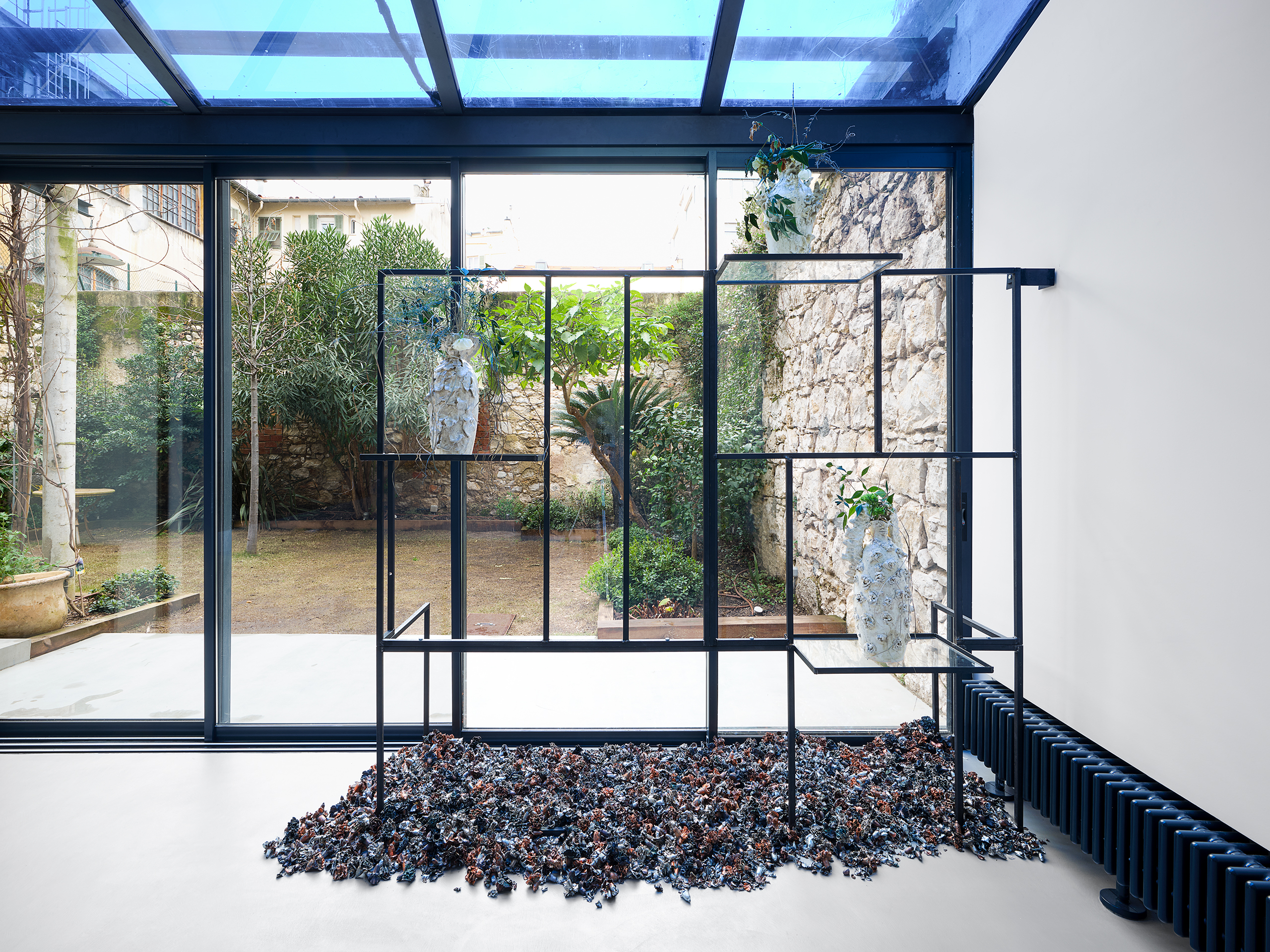
Trip Down Memory Lane
March 13-May 25, 2025 – La Gaya Scienza, Nice
Etel Adnan, Victor Miklos Andersen, Dineo Seshee Bopape, Sarah Buckner,
Miriam Cahn, Valentina Cameranesi, Chiara Camoni, Julien Carreyn, Marc Camille Chaimowicz, Pietro Chiesa, Nathalie Djurberg & Hans Berg, Lars Fredrikson, Pierre Guariche, Camille Henrot, Nino Kapanadze, Nicus Lucà, Ella Littwitz, Angelica Mesiti, Yu Nishimura, Wonmin Park, Reto Pulfer, Ugo Rondinone, Eva Rothschild, Socratis Socratous, Stéphanie Saadé, Sofia Stevi, Studio Wieki Somers, Alvaro Urbano.
Curation:
Clotilde Borg, Inès Carraz, Anouck Nouvel-Papaconstantinou.
Scenography:
Johanna Bourgin, Louise Chatelain, Chih-Yu Liu, Maëva Pillon, Jean Torres, Léo Zaragoza.
Project initiated and supported by:
Renaud Layrac, Mathilde Roman, Christophe Viart, Laurent P. Berger.
The exhibition is co-produced by La Società delle Api, and led by Pavillon Bosio as part of the Atelier de Recherche et de Création Scénographie d’Exposition. It was born of a unique collaboration between curatorial students from the Master’s program in Exhibition Sciences and Techniques at Paris 1 Panthéon-Sorbonne and art and scenography students from Pavillon Bosio.

In the exhibition Trip Down Memory Lane, the artworks from the Collection Silvia Fiorucci, Monaco act as resonant capsules of the everyday. They echo the domestic realms that dwell within our collective and personal memory. They embody a tactile desire to weave art into the repetition of our habitual gestures.
The expression “trip down memory lane” evokes a journey through recollection—a revisiting of lived moments. Here, the exhibition proposes a sensory reactivation of the ambiguous memory of domestic space.
At the heart of La Gaya Scienza—a former family apartment transformed into an artistic environment—a fictional home unfolds, shaped through the staging of uninhabited, saturated, and dysfunctional rooms. These spaces, envisioned as fragments of identity, are charged with symbolic tension. As sites of everyday ritual, they gradually slide into a zone of uncertainty and strangeness.
Far from static scenographies, these environments are affective and alive. They echo Gaston Bachelard’s Poetics of Space¹: socially inscribed territories that function as psychic mirrors of the unconscious, and as intimate vessels of memory.
Each closed door, lit by the spectral glow of neon, becomes a threshold—an enigma to be approached, a banal memory awaiting activation.
But what happens when the reassuring order of the everyday begins to crack? When the familiar shifts into the unfamiliar, when a void emerges, when a displaced or forgotten object unsettles perception? The viewer is gently led toward Freud’s concept of the uncanny²—that moment when something once known reveals its latent strangeness.
Following a path structured like an architecture of memory, the visitor gradually loses familiar landmarks. The accumulation of memories in certain rooms confronts the voids of the exhibition’s liminal spaces. The itinerary unfolds through a sequence of thresholds—each room proposing a distinct atmospheric shift. Through a strong scenographic gesture, each environment cultivates a unique sensory world that intensifies over the course of the visit. Conceived in situ, the displays allow the artworks to merge seamlessly with the spatial identity of La Gaya Scienza.
The initial spaces are infused with a sense of harmony. The living room—social showcase of the familial nucleus—invites intimacy and conviviality, just as the office pulses with optimistic energy. The child’s bedroom, sacred refuge of dreams, oscillates between innocence and unease, while the bathroom—sanctuary of the intimate and the ego—confronts us with an altered image of the self. The oratory opens a breach in this ascent toward the strange, but it is in the garden that disorientation deepens, culminating in the basement: a final threshold where secrets and spectral traces are unveiled.
